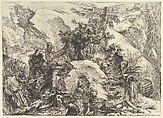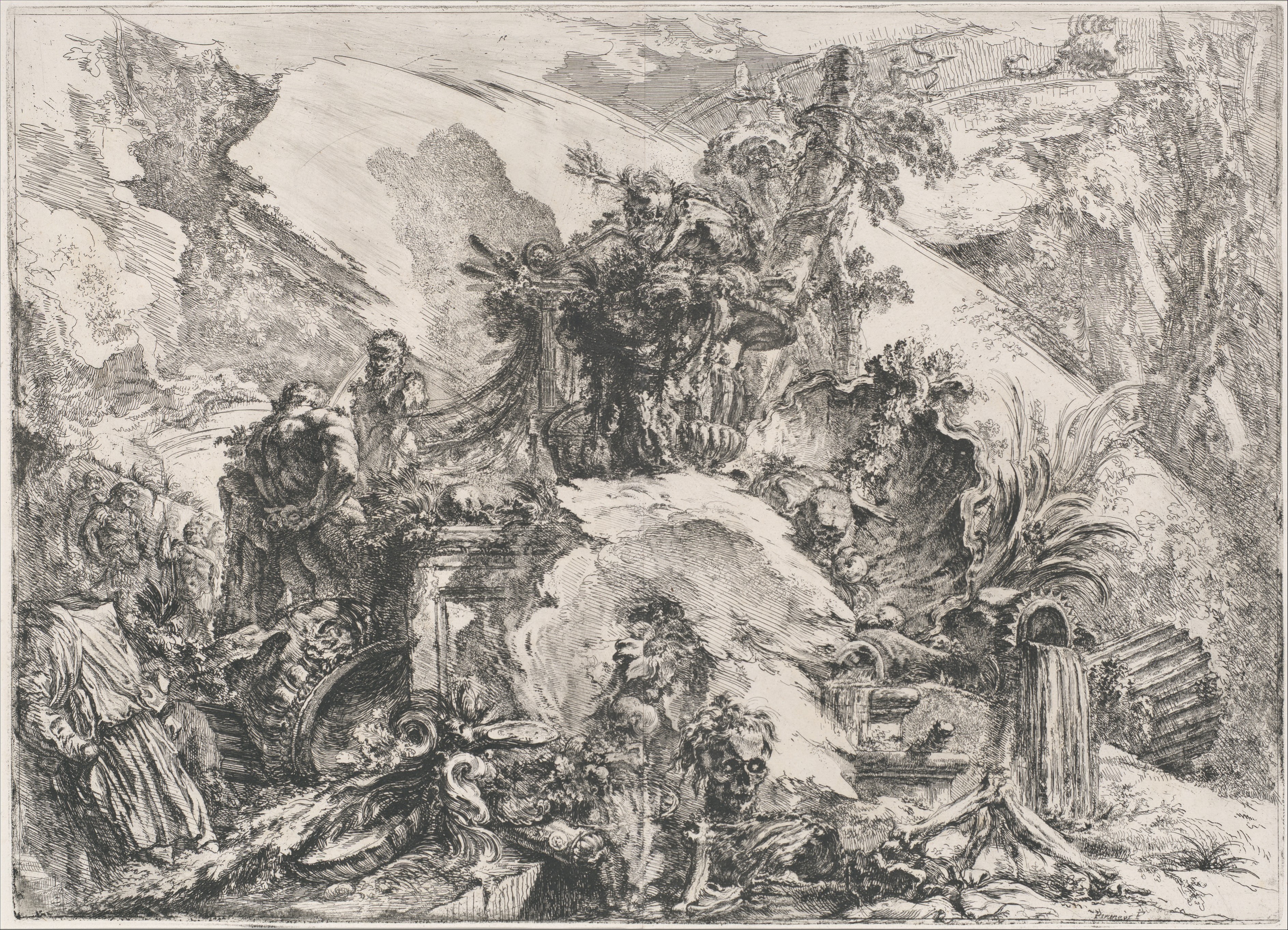The Skeletons, from "Grotteschi" (Grotesques)
Giovanni Battista Piranesi Italian
Publisher Giovanni Bouchard Italian
Not on view
Piranesi made his series of print the Grotteschi when he returned to Rome after a stay in Venice, where he is said to have worked briefly with Tiepolo. The four etchings reflect encounter with the remarkable prints of the famous Venetian . In The Skeletons, the light, sketchy strokes of varying lengths found in some areas of the print recall Tiepolo's technique, while the combination of skulls, vegetation, and crumbling ruins, as well as the ambiguity of the subject, are characteristics shared with Tiepolo's Scherzi (1976.537.19) and Capricci series. A few direct quotations from Tiepolo are seen in the Grotteschi—the smiling herm who appears here and in The Triumphal Arch has its source in one of Tiepolo's Scherzi. Whether Piranesi worked for Tiepolo or merely became acquainted with him, it appears likely that the older artist introduced Piranesi to the work of his favorite seventeenth-century printmakers. The skeletons in this print recall certain etchings by Stefano della Bella (59.570.379[3]), while Salvator Rosa (17.50.17–85)—who also depicted piles of bones, ruins, and smoking urns—provides a model for the scribbled lines and webs of crosshatching that first appear in this series.
Due to rights restrictions, this image cannot be enlarged, viewed at full screen, or downloaded.
This artwork is meant to be viewed from right to left. Scroll left to view more.





